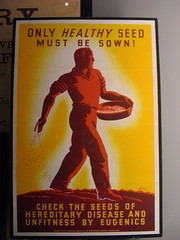Harold Hamm, discoverer of the Bakken fields of the northern Great Plains, on
America's oil future and why OPEC's days are numbered.
English: Flag of the Organization of Petroleum Exporting Countries (Photo credit: Wikipedia)
Harold Hamm, the Oklahoma-based founder and CEO of Continental Resources, the 14th-largest oil company in America, is a man who thinks big. He came to Washington last month to spread a needed message of economic optimism: With the right set of national energy policies, the United States could be "completely energy independent by the end of the decade. We can be the Saudi Arabia of oil and natural gas in the 21st century."Continue Reading ...
"President Obama is riding the wrong horse on energy," he adds. We can't come anywhere near the scale of energy production to achieve energy independence by pouring tax dollars into "green energy" sources like wind and solar, he argues. It has to come from oil and gas.
You'd expect an oilman to make the "drill, baby, drill" pitch. But since 2005 America truly has been in the midst of a revolution in oil and natural gas, which is the nation's fastest-growing manufacturing sector. No one is more responsible for that resurgence than Mr. Hamm. He was the original discoverer of the gigantic and prolific Bakken oil fields of Montana and North Dakota that have already helped move the U.S. into third place among world oil producers.
How much oil does Bakken have? The official estimate of the U.S. Geological Survey a few years ago was between four and five billion barrels. Mr. Hamm disagrees: "No way. We estimate that the entire field, fully developed, in Bakken is 24 billion barrels."
If he's right, that'll double America's proven oil reserves. "Bakken is almost twice as big as the oil reserve in Prudhoe Bay, Alaska," he continues. According to Department of Energy data, North Dakota is on pace to surpass California in oil production in the next few years. Mr. Hamm explains over lunch in Washington, D.C., that the more his company drills, the more oil it finds. Continental Resources has seen its "proved reserves" of oil and natural gas (mostly in North Dakota) skyrocket to 421 million barrels this summer from 118 million barrels in 2006.
"We expect our reserves and production to triple over the next five years." And for those who think this oil find is only making Mr. Hamm rich, he notes that today in America "there are 10 million royalty owners across the country" who receive payments for the oil drilled on their land. "The wealth is being widely shared."
One reason for the renaissance has been OPEC's erosion of market power. "For nearly 50 years in this country nobody looked for oil here and drilling was in steady decline. Every time the domestic industry picked itself up, the Saudis would open the taps and drown us with cheap oil," he recalls. "They had unlimited production capacity, and company after company would go bust."
Today OPEC's market share is falling and no longer dictates the world price. This is huge, Mr. Hamm says. "Finally we have an opportunity to go out and explore for oil and drill without fear of price collapse." When OPEC was at its peak in the 1990s, the U.S. imported about two-thirds of its oil. Now we import less than half of it, and about 40% of what we do import comes from Mexico and Canada. That's why Mr. Hamm thinks North America can achieve oil independence.
The Weekend Interview with Harold Hamm: How North Dakota Became Saudi Arabia - WSJ.com

















































